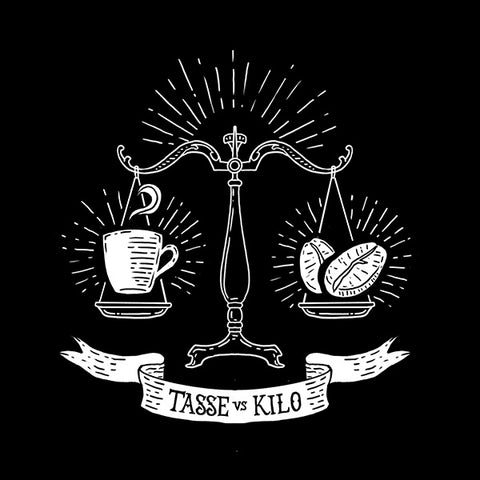Some time ago, we saw the emergence of a different name for coffees offered by roasters, incorporating the name of the country, region and farm. This new name, used correctly, allows roasters to demonstrate a more rigorous selection of their green beans and to have more intimate contact with producers.
Colombia “Dos Payasos de Tolima”
Colombia Tolima - Familia Gutierrez
Rwanda Nyamasheke Karengera
This change is interesting and helps explain to consumers the notion of terroir and the impact on the cup. And, for my part, I occasionally buy batches of specific coffees, giving as much information as possible about the origin of the coffee, the level of roast chosen and the taste profile. And including certain details in the name.
However, this change has a slightly perverse side and I believe that consumers' impressions have slipped a little. I would therefore like to take this opportunity to share with you some misconceptions that can be encouraged by some people's marketing.
The spark plug for this text is an article published on the Coffee Review website, by Kenneth Davids which I invite you to read at the following address: http://www.coffeereview.com/article.cfm?ID= 194 . Mr. Davids discusses the concept of “green coffee branding” and his disappointment with certain coffees with “microlot-ish names on their packaging but ranging in the cup from ordinary to flat-out tainted. » In short, we can read that it is not because the coffee has a complex name with the mention of micro-lot that it will be an exceptional coffee. This trend of offering small batches of coffee identified with its country, its region and its producer is extraordinary and contributes to the recognition of the work of producers, to the overall increase in the quality of the coffee produced (The pride of winning a cup of excellence and to be recognized) and the possibility of producers to work on their branding and demand a higher price (we will understand that fair trade loses its feathers). But now, according to the evaluations of around thirty coffees from Colombia by the Coffee Review team, several scored below 80... According to Mr. Davids, the roasters who sent batches which obtained less than 80 all had the impression of having submitted extraordinary coffees, from a unique terroir. Still according to Mr. Davids, he claims to have tasted in the past batches of generic coffee, exported by large distributors and respecting the grades of the exporting country, Colombia Excelso in his example, and which were much superior to certain batches submitted. I'll let you read the article for yourself.
So, just because the name is complicated doesn't mean the coffee is quality. A coffee identified by: “ Carleton entre el mar y la montaña por la familia Marqués” is not a guarantee of quality and above all is not automatically a coffee at $150/kg. The majority of producing countries take their classification system for their exported coffee very seriously and the coffees "AA" from Kenya, "Excelso" from Colombia, "screen 18" Brazil, "Grade 1" Sumatra, "grade 4" Harrar, etc. Anyway, my point is that a certain snobbery has set in in the use of the cafe's name. Certain terroirs can produce an excellent cup, but trust your palate. A classic Ethiopian Harrar gr.4 coffee is very good if roasted correctly.
I would also say that it is not because you roast “ Carleton between the mar and the mountain by the Marqués family” that you personally know the Marquès family and that you participate in the improvement of their coffee. You can go be a tourist in coffee plantations, take photos, try to understand the agricultural work of coffee but from there to say that you teach them anything… A little humility boys! Few people in the industry have the real knowledge and experience to tell Africans or South Americans how to do their job. When I see small roasters boasting about this, it gives me pimples. Working the land to produce a quality coffee bean is 10,000 times more complex than roasting. Most of the producers I know are hyper-organized with qualified agronomists, laboratories, common washing and sorting stations. I have a hard time imagining the guy who has a small Brûlerie in Canada, with 4-5 employees, teaching anyone a lesson.
Also, it is not because you roast “ Carleton between the mar and the mountain by the Marqués family” that you buy and import directly from the Marquès family. Importing green coffee is expensive. Not the coffee itself, but the transportation and minimum volume. A container contains around 400 bags of 70kg, at the bottom of that, it will cost you an arm, even both and I would add the legs. Therefore, the financial means for importing are considerable. Furthermore, no financial institution will finance inventory of this type. To import, we therefore need partners who will import the coffee and store it for us. The job of green coffee importer is essential and we cannot miss it. Here again, few companies can boast of importing their coffee.
The use of the origin of the coffee is a step forward for the consumer by giving him an additional indication of the origin of the bean. But let's be wary of marketing that may be trying to take us somewhere else. What matters, simply, is what the coffee in your cup tastes like, no matter the name, the color of the bag, or the brand used by the roaster.
Comments: While waiting for our new website, and given the millions of Viagra ads on our site, I invite you to leave your comments and come chat on our Facebook page.


Comments (0)
There are no comments for this article. Be the first one to leave a message!